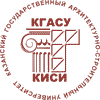About the authors
| First name, Middle name, Last name, Scientific degree, Scientific rank, Current position. Full and brief name of the organization, The organization address. | Vladimir Z. Abdrakhimov, Doctor of Technical Sciences, Professor, Samara State University of Economics, Samara, Russian Federation E-mail: This e-mail address is being protected from spambots. You need JavaScript enabled to view it , ORCID: 0000-0002-1832-2572 |
| Title of the article | The effect of argillite-like waste from carbon enrichment flotation on the porosity structure of thermal insulation material |
| Abstract. | Problem statement. To reduce the cost of natural raw materials for the production of cost-effective thermal insulation bricks, it is necessary to replace natural raw materials with waste from the fuel and energy complex., for example, waste from coal enrichment, which is already Number 1 in terms of accumulation not only in China, India and other countries, but also in Russia. Currently, about 55 processing plants are operating on a permanent basis in Kuzbass alone, which is almost 50% of all coal produced in Russia, and in general, about 60% of the total coal is extracted in the Kemerovo region. The purpose of the work is to evaluate the complementary factor of the influence of argillite-like waste from coal enrichment flotation on the technical characteristics, porous structure and phase composition of the thermal insulation material based on inter-shale clay. The objectives of the study are to recommend rational adjustments for the disposal of large-tonnage waste from the fuel and energy complex to create a production of thermal insulation bricks and to investigate the porosity structure, which determines the key parameters of the thermal insulation brick. Results. It is shown that the best preferences for the production of thermal insulation bricks have a composition containing 80% of inter-shale clay and, accordingly, 20% of argillite-like waste from coal enrichment flotation as a leaner and a burn-out additive. Integral and differential porograms of the prepared specimens (samples) produced by mercury porosimetry method revealed that 55% of the “dangerous” pores with a radius of 10-5 to 10-7 m in samples are made from inter-shale clay alone, and 42% in the optimal composition containing 20% of the leaner. Conclusions. It is noted that for the production of lightweight bricks, the preferred composition is the composition including 80% inter-shale clay, and the remaining 20% is waste from argillite-like flotation of coal enrichment. Such a thermal insulation brick belongs to class B in terms of density, and in a dry position according to the coefficient of thermal conductivity it belongs to the effective group. The introduction of a leaner reduces the content of “dangerous” pores. |
| Keywords. | argillite, flotation waste, coal enrichment, inter-shale clay, thermal insulation brick, porosity structure |
| For citations: | Abdrakhimov V.Z. The effect of argillite-like waste from carbon enrichment flotation on the porosity structure of thermal insulation material // News of KSUAE, 2025, № 1(71), p. 77-91, DOI: 10.48612/NewsKSUAE/71.7, EDN: GHOVQA |















